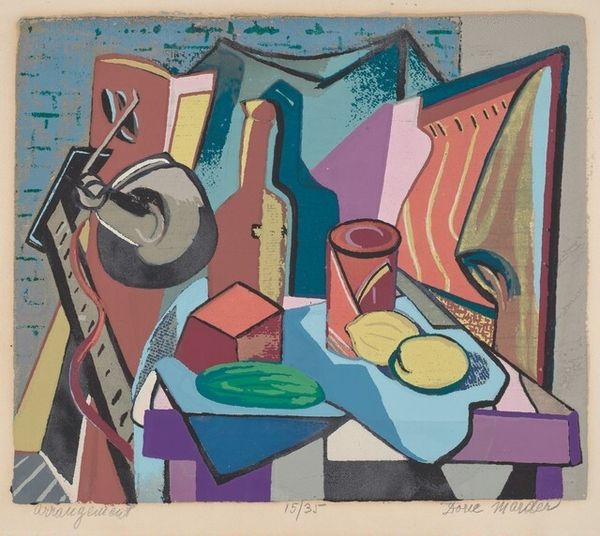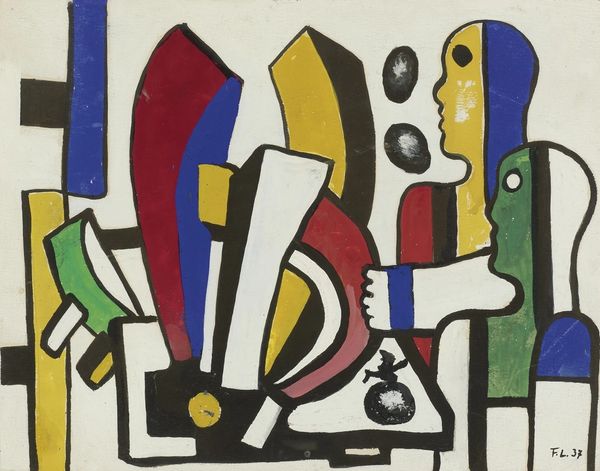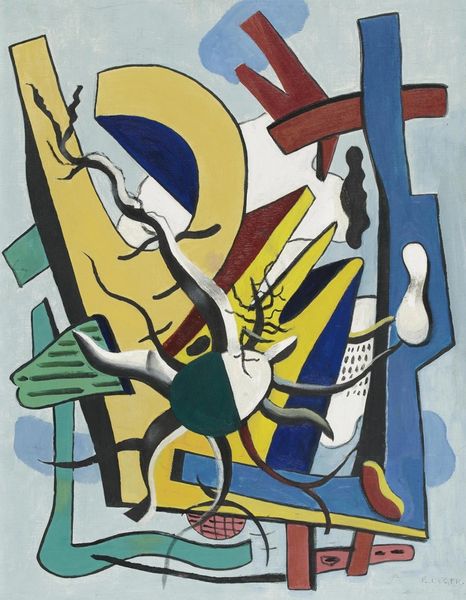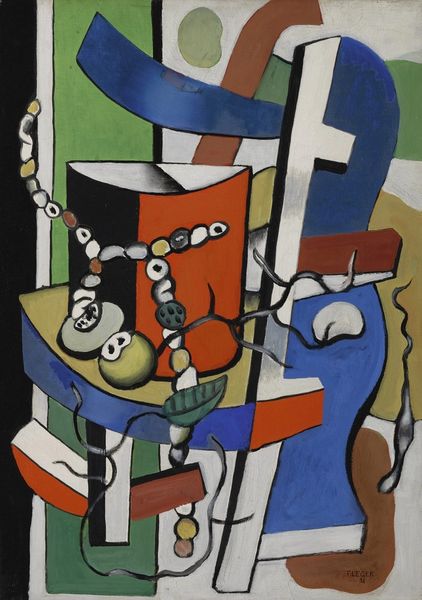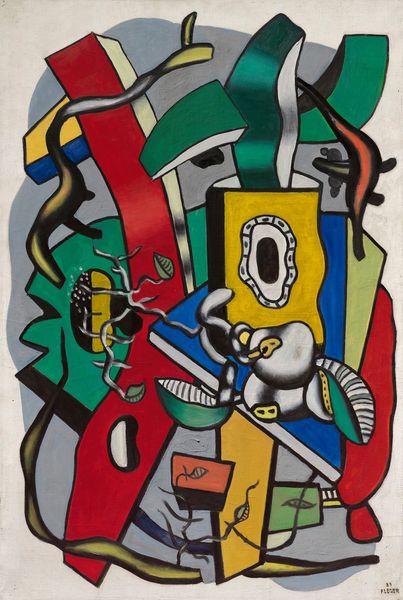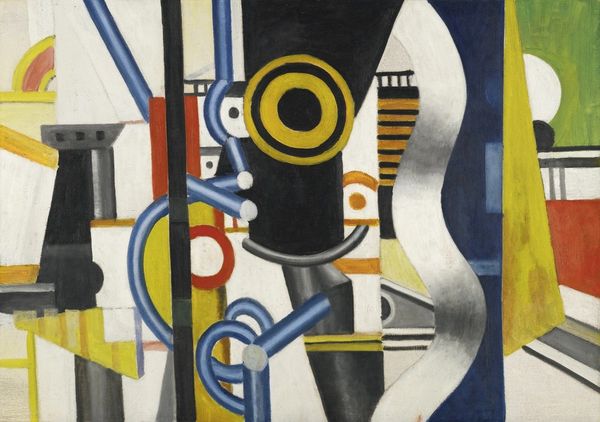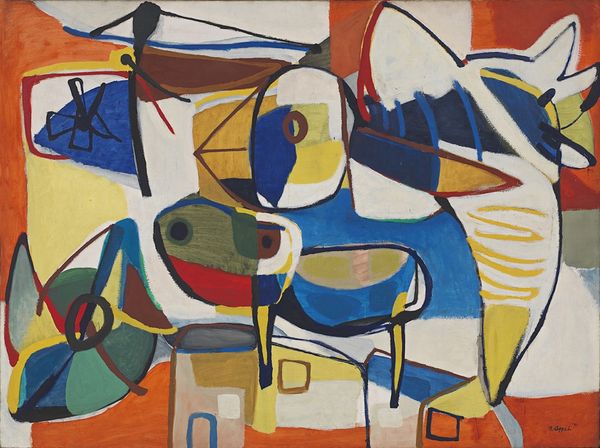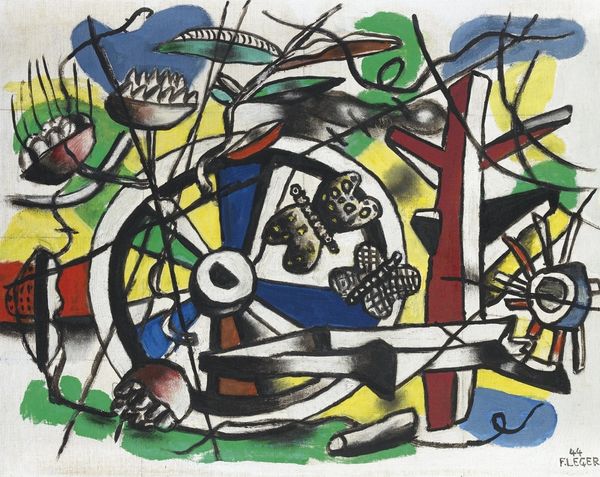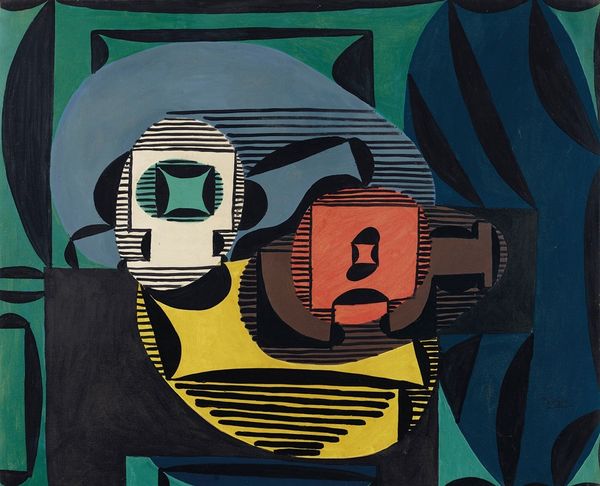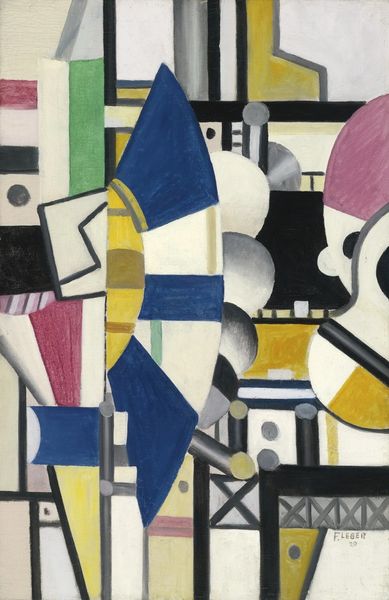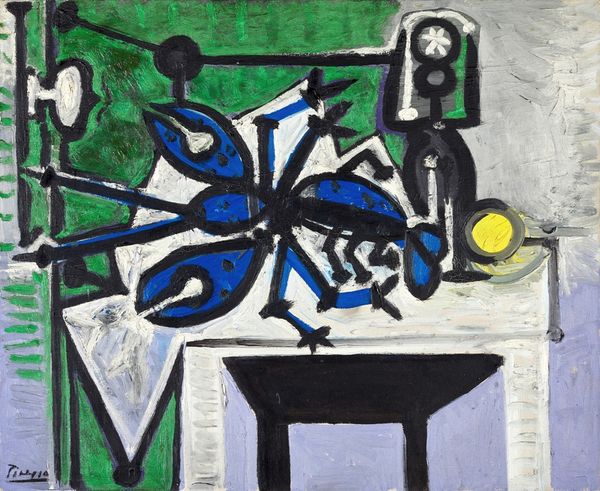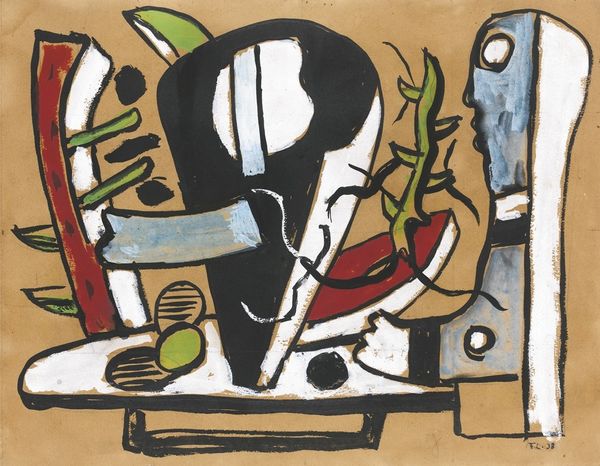
Copyright: Modern Artists: Artvee
Curator: Fernand Léger's "L’Atelier de Chevreuse," created in 1953 using oil paint, offers a vibrant look into the artist's workspace. Editor: Immediately striking is the dynamic interplay of shapes and colors. It’s a bold, almost aggressive composition. I’m drawn to the black outlining every object. It flattens the perspective. Curator: Indeed. Léger, post-World War II, aimed to depict the industrialized world and its impact on everyday life. The atelier, traditionally a space of solitary artistic creation, becomes here a locus of vibrant social and industrial imagery. He wanted to embrace a new form of monumental art, accessible and relevant to a mass audience. Editor: That's apparent in his approach to forms. They appear functional and simplified. There’s a rejection of illusionistic depth, with solid planes of color defining volume and space instead. The cylindrical forms and geometric organization give the still life a distinct structural logic. It borders on abstraction, yet hints at recognizability. Curator: It is interesting to see how the war and post-war atmosphere deeply impacted Leger, as he saw ordinary working people and how the assembly lines influenced his artwork. He represents that influence with great respect and shows his Communist values through art, depicting working people and machines together in the same space. The "atelier," or studio, becomes less a retreat and more an integrated part of the modern landscape. Editor: Yes, I can see how that merges with a larger mid-century social fabric, as well. Stripping the individual of inherent or unique value and casting importance on the components and functionality. From a purely visual perspective, Léger's masterful handling of primary colours holds so much graphic authority. He manages to find harmony even amongst chaos and that can speak volumes about his era. Curator: Considering how he aimed to portray ordinary life through art, one appreciates how Léger used this visual language as a response to societal transformation and the position of art within these shifts. Editor: And regardless of intention, I cannot ignore that, on the visual level, he constructed something truly unique and deeply impressive to view, both now and in the mid-century context.
Comments
No comments
Be the first to comment and join the conversation on the ultimate creative platform.
